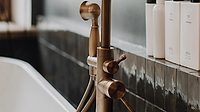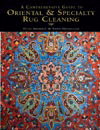Laticrete Looks to the Future with 3D Printing Mortar Technology Advancements

Bethany, Conn. -- Laticrete is making investments in industry advancements with 3D printing mortar technology. The company is sponsoring Ball State University Design Innovation Fellow and assistant teaching professor Christopher Battaglia to create DE|stress, a 3D-printed concrete shell of 110 unique panels that will be assembled on top of a pavilion created using a 3D printable mortar prototype Laticrete has developed and plans to launch in 2020. The project will be featured among 18 other temporary installations at Exhibit Columbus, the annual exploration of architecture, art, design and community in Columbus, Ind. that began August 23.
“Our company’s collaboration with Battaglia and the production of a 3D printable mortar prototype is part of an ongoing innovation effort in both 3D printing and the digital transformation of construction," said Mathew Carli, director of innovation and strategic planning. "We are happy to support future talent like Battaglia and anticipate that our work with Ball State University for Exhibit Columbus is just the tip of the iceberg.”
Key attributes of the prototype cement-based mortar for use in 3D printing are related to durability and the ability to produce this product globally. The prototype was designed to support multiple layers to avoid collapse, and created using controlled materials that can be locally sourced for mass production worldwide.
“The idea behind developing a 3D printable mortar is to streamline the construction process, requiring less labor and producing no waste on the jobsite," Carli added. "The construction industry in the U.S. is facing a major labor shortage, so using a 3D printable mortar would not take away jobs, but instead, it would act as a supplement where there is a current deficit.”
In addition to the collaboration with Ball State University, Laticrete is working with large scale 3D printers in other countries such as Dubai to test its prototype. Locally sourced and produced materials from Laticrete are currently being printed by 3DVinci Creations to have a reproducible system developed for the Gulf environment.
“The printed materials are designed to encompass excellent performance, ease of use and sustainability,” said Kho Verian, Ph.D., the scientist who leads the development of Laticrete 3D printing materials. “Dubai being synonymous with avant-garde is the perfect home for such collaboration and is the ideal opportunity for us to explore the local dynamics from sourcing local materials to understanding how the materials will hold up postprint.”
For more information, visit laticrete.com.
Looking for a reprint of this article?
From high-res PDFs to custom plaques, order your copy today!






